Amaro 102: Beyond Basic Bitters
Amaro 102: Beyond Basic Bitters
(Other working titles included Intermediate Amari & Conversational Amari)
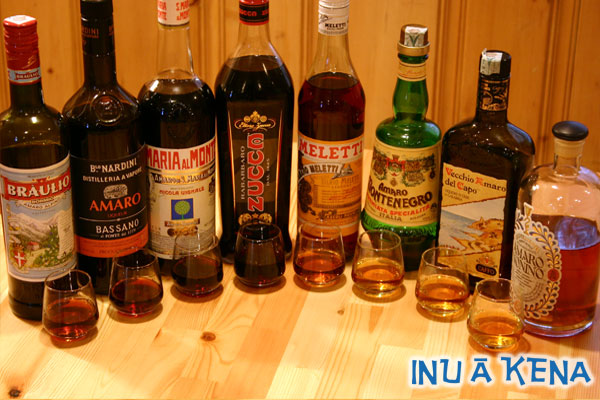
Although my primary focus here at Inu A Kena is rum, one of the most popular articles on the site is an intro to Italian amari called Amaro 101. Since that article was published, I have further developed my love for amari and acquired several others that are less well-known, so I thought it high time to publish a follow-up. Amaro 101 covered eight widely available amari, so let’s take a look at another eight here for Amaro 102.
Braulio Amaro
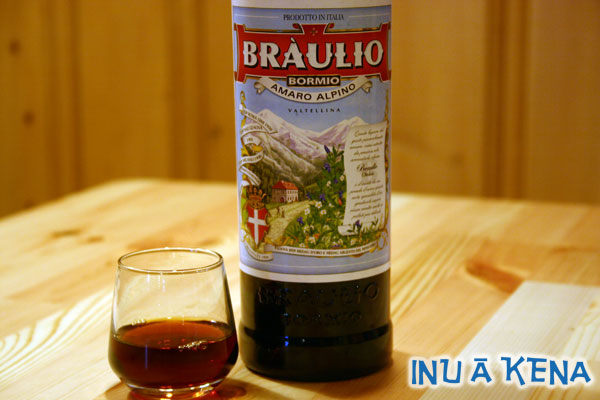
Hailing from the Alpine region of Valtellina near the Swiss border, Braulio is the brainchild of botanist Dr. Francesco Peloni, who created it in 1875. The botanicals used include gentian, juniper, wormwood, and yarrow—there are at least nine others that remain a secret. These botanicals were traditionally gathered on a hillside named Bormio, hence its inclusion on the bottle. Unique among amari is its finishing—Braulio is aged in Slavonian oak for two years prior to bottling.
Braulio’s aromas include a host of fresh herbs including chamomile, pine, and menthol. It’s fairly sweet and viscous, but manages to stay well-balanced. I purchased my first bottle of Braulio in Tuscany, but I’m happy to report it is now being imported by Domaine Select in New York. Braulio can be found for purchase online at Astor Wines, K&L, and elsewhere.
Description
| Origin | Proof | Known Ingredients | Principal Flavors | Cost/750 ml |
| Valtellina | 42 |
Gentian, juniper, wormwood, yarrow |
Chamomile, pine, menthol | $32 |
Braulio Cocktails
Peloni
(Chris Danforth via Frederic Yarm)
2 oz Rye
½ oz Braulio
¼ oz Demerara syrup
¼ oz Maraschino liqueur
Dash Angostura bitters
Stir with ice and strain into a rocks glass. Garnish with an orange twist.
High Altitude
(Max Greco via Jason Rowan)
1.5 oz Rye
¾ oz Braulio
¾ oz Dubonnet rouge
Stir with ice and strain into a rocks glass over large ice. Garnish with an orange twist.
(Note: Original proportions were 40 ml, 20 ml, 20 ml)
Amaro Meletti
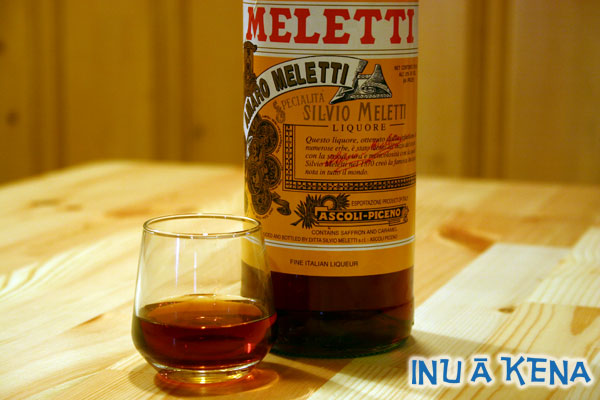
In 1870, Silvio Meletti began producing a popular anise-flavored liqueur bearing his name. Years later, he added an amaro to the line. Meletti is unique in a few ways, principal among them is the addition of saffron—quite an expensive ingredient indeed.
Meletti is a bit astringent for an amaro, but its somewhat hot and bright entry is tamed quickly by sweetness. The initial flavors are of orange zest, chocolate and licorice. Subsequent sips show cardamom and cinnamon. Meletti can be found online at DrinkUpNY, K&L and elsewhere.
| Origin | Proof | Known Ingredients | Principal Flavors | Cost/750 ml |
| Marche | 64 | Anise, saffron, violet | Orange, chocolate, licorice, floral | $17 |
Meletti Cocktails
The Mancini
(Greg Seider via Food Republic)
2 oz Rye
½ oz Meletti Amaro
2 dashes smoked cinnamon bitters
2 dashes orange bitters
Wide orange twist
Stir with ice and strain into a rocks glass over large ice. Garnish with the wide orange twist.
Nerina
(Jason Kosmas / Dushan Zaric via Wine Enthusiast)
1¼ ounces Plymouth gin
1¼ ounces Meletti amaro
1¼ ounces Punt e Mes sweet vermouth
1 orange twist, for garnish
Pour all the liquid ingredients into a mixing glass. Add large cold ice cubes and stir for 40 revolutions. Strain into a chilled cocktail glass. Garnish with an orange twist.
Amaro Montenegro
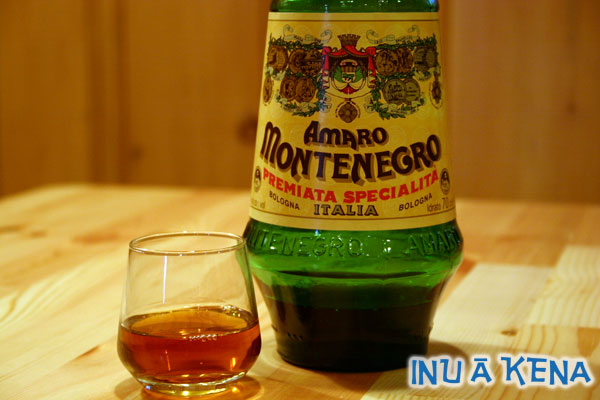
Amaro Montenegro is one of my hands down favorite amari. I discovered it in Italy, but was pleasantly surprised to find it enjoyed US distribution when I returned. This amaro was created in 1885 by Stanislao Cobianchi, who named it in honor of princess Elena of Montenegro. The bottle is stunning—the label, the shape, I’m seriously tempted to make one into a lamp. Now it’s not the most bitter, nor is it the most alcoholic (just 23% ABV) but its combination of flavors never ceases to put a smile on my face. It also works quite well in cocktails.
Montenegro’s flavors include orange zest, cinnamon, gentian, cacao, and several herbaceous and vegetal notes that can be hard to pin down. Think parsley and cucumber—it all works amazingly well together. Amaro Montenegro can be found online at Hi Time Wine Cellars, DrinkUpNY, Cask and elsewhere.
| Origin | Proof | Known Ingredients | Principal Flavors | Cost/750 ml |
| Bologna | 46 | Vanilla, orange peel | Orange, clove | $25 |
Amaro Montenegro Cocktails
La Merced
(Josh Miller, Inu A Kena)
1.5 oz Encanto Pisco
1.5 oz Amaro Montenegro
1.5 oz Carpano Antica vermouth
Stir with ice and strain into a double Old Fashioned glass over large ice. Garnish with a wide orange twist.
Beginner’s Luck
(Eddie Diaz via Anthony Dias Blue)
1 dash Angostura bitters
1 oz. Amaro Montenegro
4 oz. Prosecco
Citrus zest
Line the glass with a dash of Angostura bitters. Add the Amaro Montenegro, then add Prosecco. Use a generous zest of either orange or a grapefruit, squeezing the rind to release the oils before dropping it into the glass.
Nardini Amaro

In 1779, Bartolo Nardini left his hometown and opened a grappa distillery in the town of Bassano—it remains the oldest distillery in Italy. Nardini also operates a famous grappa shop on the Alpini bridge—the enduring symbol of the town itself. Bassano was a hotbed of activity during various wars through the ages; Ernest Hemmingway famously included Bassano in A Farewell to Arms. Today, Nardini makes a wide variety of products including many fine aged grappas and liqueurs.
Amaro Nardini is so dark as to be foreboding in comparison to the lighter amari such as Montenegro, but don’t let it scare you; it’s actually quite refreshing. The initial flavors are of mint and licorice, followed by citrus, a bit of chocolate, and a healthy dose of gentian bitterness. Nardini can be found at DrinkUpNY, Cask, and elsewhere.
| Origin | Proof | Known Ingredients | Principal Flavors | Cost/1 L |
| Veneto | 62 | Licorice, bitter orange, peppermint, gentian | Licorice, mint, citrus, cacao | $51 |
Nardini Cocktails
Carroll Gardens
(Joaquin Simo via Jay Hepburn)
2 oz rye
½ oz Punt e Mes
½ oz Nardini Amaro
1 barspoon Maraschino liqueur
Stir with ice and strain into a cocktail glass. Express a lemon twist over the glass and discard.
Six Inch Gold Blade
(Al Sotack via Frederic Yarm)
1 1/2 oz Smith & Cross Rum
1/2 oz Punt e Mes
1/2 oz Nardini Amaro
1/2 oz Campari
1/2 tsp Laphroaig Scotch
2 dash Angostura Bitters
1 dash Mole Bitters
Stir with ice and strain into a cocktail coupe glass. Twist an orange peel over the top and discard.
Nonino Quintessentia Amaro
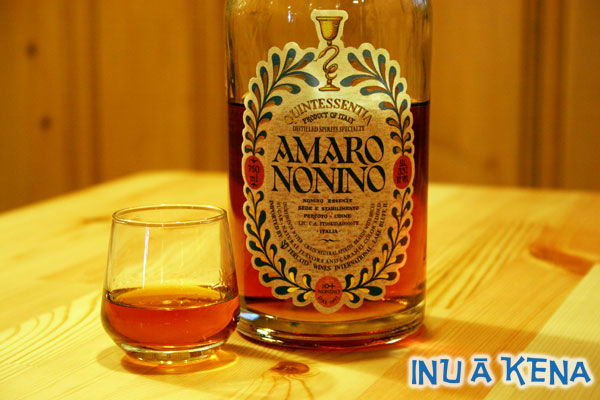
While the house of Nonino has been making spirits since 1897 and amari since 1933, Amaro Nonino has only been produced since 1992. Still owned and operated by the Nonino family, they are primarily known for their ÙE, a whole grape, no stem distillate considered by many to be superior to grappa, which is typically made from grape skins and stems. Their amaro is also unique in its finishing—it spends time in nevers, limousin, and ex-Sherry casks prior to bottling.
| Origin | Proof | Known Ingredients | Principal Flavors | Cost/750 ml |
| Udine | 70 | Gentian, rhubarb, orange peel, quassia wood, tamarind, galenga, licorice, saffron, cinchona | Bitter orange, rhubarb, cinnamon, licorice | $45 |
I bought my first bottle of Nonino because the sheer volume of cocktail recipes including it was impossible to ignore. One sip and I could see why. The initial flavor you detect is a very pronounced orange. Not just orange zest, but an entire fresh orange. Immediately after the Nonino hits the back of your palate, however, is when things really get interesting. It’s here that you are reminded this is a 35% ABV spirit—there is some significant heat that combines with the bitterness to make even an experienced amari drinker sit up and take notice. The roundness of the Nonino is easy to appreciate, and one can only assume this is owed to its base—not just neutral spirits, but a fine whole grape, no stem grappa. Beyond the orange, you’ll find hints of rhubarb and cinnamon, licorice and tamarind. Fantastico. Nonino enjoys wide U.S. distribution, and can be found at many places including Hi Time Wine Cellars, Astor Wines & Spirits, K&L, and even BevMo.
Nonino Cocktails
Paper Airplane
(Sam Ross via Kindred Cocktails)
¾ oz Bourbon
¾ oz Amaro Nonino
¾ oz Campari
¾ oz lemon juice
Shake with ice and strain into a cocktail glass.
Spiced Pimm’s Cup
(Joel Teitelbaum via Imbibe)
1 1/2 oz. Pimm’s No. 1
1/2 oz. Amaro Nonino
1 oz. fresh lemon juice
1/2 oz. turbinado simple syrup (1:1)
Ginger beer
Shake all but the ginger beer with ice, strain into an ice-filled highball and top with ginger beer. Stir gently to combine and garnish with a dusting of grated cinnamon.
Rabarbaro Zucca Amaro
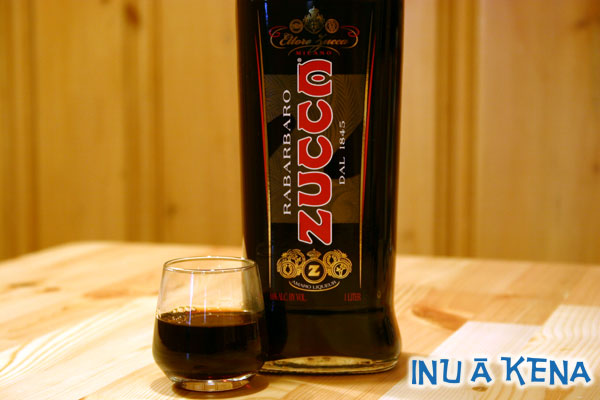
Rabarbaro Zucca was created in Milan in 1845 by Ettore Zucca. His amaro found favor with King Vittorio Emanuele, who served it in the royal court, and its popularity soared as a result. The name was borrowed by the famed Zucca in Galleria café opposite the duomo in Milan, where it is still served today.
Another deeply dark-colored amaro, Zucca is noticeably thinner than its competitors. The first taste is undoubtedly rhubarb, followed quickly by the notion of heavily charred wood. After the smoke and char one can detect mint, just a bit of citrus and a hint of cardamom. Zucca can be found online at DrinkUpNY, Cask, Astor Wines and Spirits, and elsewhere.
| Origin | Proof | Known Ingredients | Principal Flavors | Cost/1 L |
| Lombardy | 32 | Rhubarb, cardamom, citrus zest | Burnt rhubarb, bitter orange, mint | $28 |
Zucca Cocktails
Criterium
(St. John Frizell via La Cucina Italiana)
1 ½ oz Zucca
1 ½ oz fresh grapefruit juice
½ oz fresh lemon juice
½ oz gin
1 tsp superfine sugar
Soda water
Wide grapefruit twist
Add all but soda to a shaker and shake vigorously. Strain into an ice-filled highball glass. Top with soda and garnish with the grapefruit twist.
Roma Borgorock
(Francesco Belei via StarChefs)
1 ½ oz Green Chartreuse
1 ½ Zucca
¾ oz Punt e Mes
4 dashes lemon bitters
Stir and strain into a double Old Fashioned glass filled with fresh ice. Garnish with a lemon twist and a Luzardo cherry.
Santa Maria al Monte Amaro
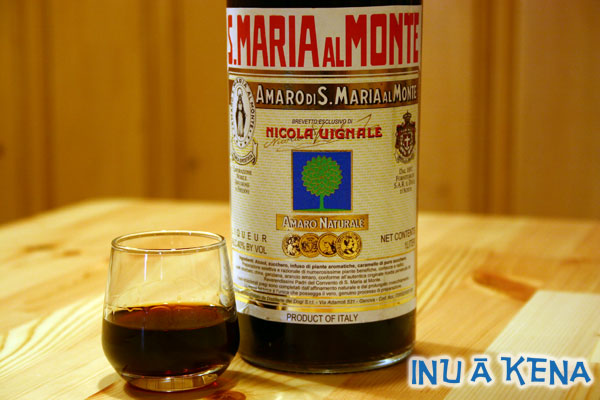
Santa Maria al Monte was originally developed by Franciscan monks in Genoa. In 1892, Nicola Vignale commercialized the production, and its popularity has continued in Italy to this day. This amaro is aged in oak for a year prior to bottling.
If you like Fernet Branca, there’s a good chance you’ll enjoy Amaro di Santa Maria al Monte. It’s made in the Fernet style, after all. Also like Branca, it’s 40% alcohol, so this one is a legitimate post-shift drink contender for our bartending friends. The initial flavor is decidedly mint. There is a significant heat on entry that serves as a healthy reminder of its strength. More vegetal and herbaceous than citrusy, the Santa Maria al Monte still finishes with a kick of bitter orange zest followed by ginseng, menthol and gentian. Santa Maria al Monte is among the driest amari I have tried, so if you find others cloying, this may be the amaro for you. Santa Maria al Monte can be found online at DrinkUpNY, K&L, Vino and elsewhere.
| Origin | Proof | Known Ingredients | Principal Flavors | Cost/1 L |
| Liguria | 80 | Bitter orange peel, ginseng, aloe, myrhh, rhubarb, saffron, cardamom, cola nut | Mint, orange, ginseng | $28 – $37 |
Santa Maria al Monte Amaro Cocktails
Bittere Mout
(Bobby McCoy via Frederic Yarm)
2 oz Bols Genever
¾ oz St. Germain
¼ oz Santa Maria al Monte
1 dash orange bitters
Stir with ice and strain into a cocktail glass. Garnish with an orange twist.
Rude Boy
(Scott Holliday via Frederic Yarm)
2 oz Wray & Nephew Overproof White Rum
3/4 oz Lime Juice
1/2 oz Simple Syrup
1/4 oz S. Maria al Monte Amaro
3 drops Orange Blossom Water
Shake ingredients with ice and strain into a cocktail glass. Drop the orange blossom water on top and garnish with a lime wedge.
Buy Santa Maria al Monte Online
Vecchio Amaro del Capo

Vecchio Amaro del Capo’s label bears the likeness of its namesake: the Capo Vaticano, a promontory made of near-white granite acknowledged as a holy site since time immemorial. Joseph Gruner founded the Distileria Caffo in 1915–it remains a family-run company. As recently as the 1970’s, del Capo was only distributed in Calabria, and often only consumed ice cold in the Summer months. Today you can find it distributed throughout the world.
Pour a dram of Vecchio Amaro del Capo and dive in nose first. You might think you’ve just run through a field of fennel – to say it smells of licorice doesn’t do justice to the impression of freshness. The first sip yields a similar notion—fennel, licorice, and citrus zest come together with a more than healthy dose of zucchero (that’s sugar, paisano). Following this is a big dash of coriander and a nice bit of grapefruit. Bordering on cloying, Vecchio’s flavors beg to be used in cocktails where additional ingredients might balance its sweetness, which is a bit much for me. I find it works beautifully with Bourbon, but its producers simply suggest drinking it directly out of the freezer. Click here for one of their Italian TV commercials. Del Capo can be found online at DrinkUpNY, Laurenti Wines, Vino, and elsewhere.
| Origin | Proof | Known Ingredients | Principal Flavors | Cost/750 ml |
| Calabria | 70 | Mandarin orange, anise, chamomile, juniper, licorice, mint, hyssop | Licorice, honey, coriander, grapefruit | $23 |
Vecchio Amaro del Capo Cocktails
Tennessee del Vecchio
(Josh Miller, Inu A Kena)
2 oz Bourbon
½ oz Vecchio Amaro del Capo
Orange bitters
Stir with ice and strain into a chilled coupe.
Momo’
(From Grupo Caffo)
¾ oz Campari
¾ oz Vecchio Amaro del Capo
Soda
Build over ice in a rocks glass.
Buy Vecchio Amaro del Capo Online
Conclusion
So there you have it, amici—eight more amari to try either on their own or in cocktails. Keep expanding your bitter horizons and good things are sure to follow. Just like a shot of Fernet Branca has been called “the bartender’s handshake” a love of amari can really bring people together. As I write this, I’m reminded of an amazing meal I enjoyed at an upscale restaurant in Rome. After dessert, I asked our waiter in my best Italian what amari they had, and his face lit up as if I was a long-lost cousin. In perfect English, he told me what they had, but that none of them could compare to the local amaro from his hometown. We had connected over amari. Now it’s your turn!
Salute,
Josh
P.S If you haven’t read my first article about amari entitled Amaro 101, click here—it’s a prerequisite after all. And if you’re ready for MORE amari, check out Amaro 103: Advanced Amari, and Amaro 104: Continuing Education.
I just got my first bottle of amari last week. It is the Amaro Meletti. I’ve been making a drink with it that I call the Drunken Helmsman. 1oz lime, 1/2oz maple, 1/2oz falernum, 1/2 Amaro Meletti, 11/2oz Plantation Dark Overproof. Shake with ice and pour into a double bucket. garnish with an orange twist and mint sprig.
Thanks Josh for keeping me informed and educated.
That sounds fantastic! You’re bound and determined to make me buy a bottle of Plantation overproof, aren’t you!
It is pretty tasty stuff. I haven’t had a bad thing from the entire Plantation line. Considering all the money I’v spent because of your reviews and writings, I think it is only fair. My apologies for slacking on not trying the solera wray solo yet, I’ve been a busy man and haven’t wanted to try and sip and compare while stressed. I think I might try a bottle of Ramazotti next. I’m really starting to like this amari stuff
Josh, very interesting, terrific. The little we know about bitters is Angostura, whose use of real ingredtients – no aritificial or “natural” flavors of any kind – is commendable. My question: are any of these “amaro” label the use of either “artificial (or) natural flavors”?
The Italians are pretty serious about their bitter liqueurs, and many of the the producers are still owned and operated by their founders’ progeny. Not only do most use natural ingredients, some use their own grappa as a base and gather the herbs and barks locally. Larger brands such as Campari use some artificial ingredients now including the red dye, which in the past came from ground insects.
Wow Josh, congratulation! You really got the point!!
Me and my girlfriend, we are Amaro lovers (especially her)… and when it comes to Amaro, always ask to Italians!
By the way I must assure that the best way to enjoy Amaro del Capo, is -18º C straight from the freezer, that’s how it is usually served at bars in Italy (and at home too). Creamy and cold. A great refresher!
cheers!
Grazie mille! Salute!
A follow up: thanks to this unique and interesting series Sue Sea and I finally decided to delve into the Fernet Branca, particularly because we know that this particular one is particularly beloved not only in Italy but as you mentioned in Argentina and in better bars in SFO, NYC, Portland and Miami.
We simply love tradition and when a particular spirit is revered culturally, the people simply can’t be wrong, not to mention this is still a product of generations of the family that invented it. To be brief – not my strong suit – we loved it – neat, with a bit of crushed ice and last in a drink suggested by one of our readers composed of an ounce of a good Islay whisky, and 1/2 ounce each of Branca and sweet vermouth (in our case Martini and Rossi).
Terrific. Our thanks….
Fun & educational series, thanks! Now I have some ideas for what should join the Averna and CioCiaro in my liquor cabinet!
Speaking of the CioCiaro, I concocted a variant of the Last Word using CioCiaro in place of the Chartreuse and lemon juice in place of the lime juice (Meyer lemon, in fact, because that’s the tree that’s in our yard :). I added a dash of Regan’s orange bitters to punch it up slightly. if you try it, let me know what you think & if you have any ideas to improve it, that’d be welcome, too!
Right on, James! Will have to try that Last Word riff you came up with. Cheers
Thanks for this great set of posts on so many varieties of Amaro. It’s been really helpful as I get myself up to speed, tasting and experimenting. And helpful preparation for my trip to Italy. I’m finding myself partial to the moderately bitter, moderately sweet ones like Cynar, Vecchio Amaro del Capo, and Ramazzoitti.
Cheers, Rob!
I just discovered your amaro reviews and I’m envious of the relentless tasting that went into your sophisticated and well researched reviews. My favorite concoction of late is listed right on the back of the Zucca bottle – Mezzo Piano. There is something about Zucca and Cocchi diluted with seltzer water that keeps me fixing them all night. Cheers!
Thanks very much for the kind words, Ron! Might have to try that one. Cheers